#The Order of Toledo: Imaginary walks in avant-garde times
Text
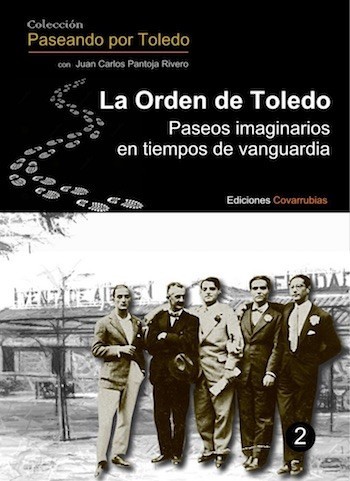


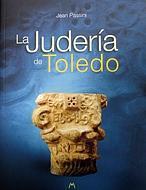
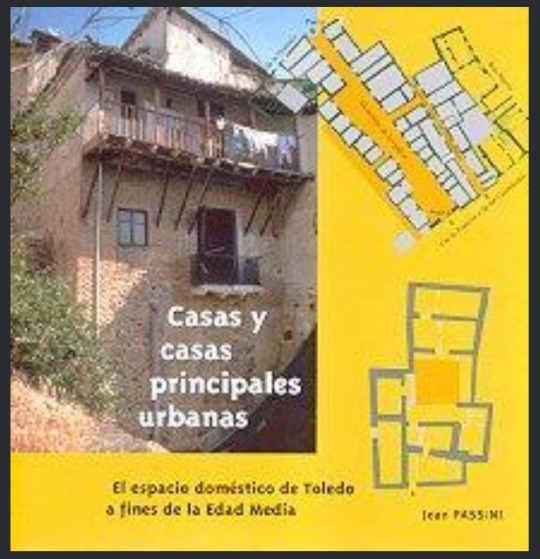


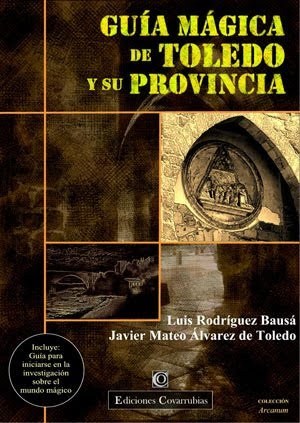


Propaganda
1. La Orden de Toledo: Paseos imaginarios en tiempos de vanguardia (The Order of Toledo: Imaginary walks in avant-garde times)
Author: Pantoja Rivero, Juan Carlos
Editorial: Covarrubias Ediciones
Edition: 2019
Synopsis: The Order of Toledo was, above all, an avant-garde fantasy of the brilliant film director Luis Buñuel, who knew how to infect his friends from the Generation of '27 to the Spanish intellectuality of the first third of the 20th century. Together, they dedicated themselves to living Toledo as if it were the great stage of a surrealist montage, in an artistic (or anti-artistic and irational) contrast with the monumentality and historical past of the old dead city.
(Well, in my blog I have been making posts about The Order of Toledo and the book is a valuable source)
2. Toledo: La ciudad de los muertos (Toledo: The city of the dead)
Author: Leblic García, Ventura
Editorial: Covarrubias Ediciones
Edition: 2013
Synopsis: Toledo. A large historical necropolis where Carpetans, Romans, Visigoths, Muslims, Jews and Christians rest...their rites around death, beliefs, customs, evolution of the cemetery spaces...
(I have posted the scans of the first pages of this books and I'm planning to keep on posting them but I wanted to know if you want scans from another book)
3. De Mayrit a Madrid: Madrid y los árabes del siglo IX al siglo XXI (From Mayrit to Madrid: Madrid and the Arabs from the 9th century to the 21st century)
Editors: Madrid. Casa Árabe e Instituto Internacional de Estudios Árabes y del Mundo Musulmán ; Barcelona ; Madrid: Lunwerg
Edition: 2011
Synopsis: This work deals with the Arab-Islamic past (Andalusian, Mudejar and Moorish) of Madrid and its forgotten heritage since it is the only European capital whose origins and name are linked to Arabic.
Revisiting that past and making it known is the objective of this work, which wants to rescue knowledge of a relationship between Madrid and the Arabs that does not end in the Middle Ages, since the town and court maintained various links with what was over time. Arab through diplomatic delegations, Arab figures welcomed by the city, valuable collections of manuscripts and numismatics, a romantic architectural taste that seeded the city with unique neo-Islamic buildings or Hispano-Arab scientific and cultural institutions. And, finally, the cosmopolitan and intercultural reconversion of the city has made it the recipient of a new Arab and Muslim immigration that once again gives human visibility to this relationship between Madrid and the Arab.
4. La Judería de Toledo (The Jewish Quarter of Toledo)
Author: Passini, Jean
Editorial: Ediciones del Sofer
Edition: 2014
Synopsis: The work reveals the vestiges of the areas of medieval Toledo Jewry and its history. It collects a topographical reading of its evolution and offers the main elements through maps, plans and high-quality color photographs.
5. Casas y casas principales urbanas : el espacio doméstico de Toledo a fines de la Edad Media (Houses and main urban houses: the domestic space of Toledo at the end of the Middle Ages)
Author: Passini, Jean.
Editor: Toledo. Universidad de Castilla-La Mancha
Edition: 2004
Synopsis: This work is an extension of previous research on different districts, and seeks, for the city as a whole, to “understand the genesis of medieval urban space, to follow its transformations and successive reappropriations” , mainly with the aim of understanding, for one of the ancient provincial capitals of al-Andalus, the modalities of the transition from the Muslim city of the end of the eleventh century (time of its occupation by the Christians) to the Castilian city of the end of the Middle Ages. The main documentary basis of the work is a very important and very detailed inventory of the real estate of the Cathedral Chapter, an inventory carried out in 1491-1492, which covers a considerable heritage of 557 various buildings located in 64 sites or districts. The identification and location of houses, shops, mesones or fondouks and other urban buildings, often difficult on the current plot, has however resulted in the careful study of more than half of these old buildings. The systematic comparison of the text from the end of the Middle Ages with the remains still visible above ground or underground (and this very meticulous and patient work in the cellars of current Toledan houses is one of the great originalities of the research of Jean Passini) gave the results which are presented in this latest publication.
6. España medieval : el origen de las ciudades (Medieval Spain: the origin of the cities)
Authors: Novoa Portela, Feliciano; Villalba Ruiz de Toledo, F. Javier
Editors: Barcelona ; Madrid : Lunwerg, D.L.
Edition: 2012
Synopsis: A fascinating essay that will teach us to look at and understand our cities better. In the pages of this essay we will analyze the Roman origins, the Islamic, Christian and European influences to discover the cultural melting pot that marks the Spanish urban legacy, without forgetting some disappeared cities that tell us their history through archaeological remains.
7. Valle-Inclán y el insólito caso del hombre con rayos x en los ojos
(Valle-Inclán and the unusual case of the man with x-rays in his eyes)
Editors: Madrid. La Felguera
Edition: 2014
Synopsis: In 1923, a piece of news sparked great controversy among intellectuals, journalists and scientists. Joaquín Argamasilla, a young descendant of a family of aristocrats, claimed to have x-ray vision that allowed him to see through opaque bodies. The controversy, which divided half the country between defenders and detractors of the strange case, reached the highest circles. In April, at the initiative of Queen María Cristina, a commission was established to study the case, chaired by Ramón y Cajal. Valle-Inclán came to Argamasilla's defense and the great Harry Houdini challenged him to a public demonstration in New York.
(Joaquín Argamasilla, Harry Houdini, Valle-Inclán, Ramón y Cajal... yep, we're thinking the same, episode 2xO6, Tiempo de Magia, from El Ministerio del Tiempo, if anyone wants to learn more about this topic this book is good)
8. Guía mágica de Toledo y su provincia (Magical guide to Toledo and its province)
Authors: Rodríguez Bausá, Luis; Álvarez de Toledo, Javier Mateo
Editorial: Ediciones Covarrubias
Edition: 2010
Synopsis: Saramago wrote that traveling should be a matter of another matter, staying more and walking less; and a little later he added that it is not good to stay for only a quarter of an hour next to a construction that is seven hundred years old. The authors agree with such appropriate phrases, and that is why they have written this route, this uneven guide, this compilation of events, in short, so that the traveler stops in a multitude of towns that only sounded like transit and never like stop and inn. Because the truth is that the city of Toledo and its province discreetly hide a large number of enclaves that deserve to be savored by the five senses, and in which one must rest until the memory is macerated. This is what this work talks about: caves, sacred mountains, magical wells, rainy images, enchanted fountains or thunderous miracles... but, above all, towns, cities and regions; yes, with order and a taste of dissidence and heterodoxy.
Also included is what the authors have called "Beginner's Guide", a brief but rigorous approach to the magical phenomenon, something like an index so that whoever wants it, has the basic premises to get started in the world of research on these issues.
9. AL-ANDALUS. Ocho siglos de civilización musulmana que marcaron la historia y la cultura de España (AL ANDALUS. Eight centuries of Muslim civilization that marked the history and culture of Spain)
Author: Masiá, Concha
Editorial: ALBA
Edition: 2006
Synopsis: "In the year 711, the Muslims arrived in the Iberian Peninsula. They called the vast territory where they settled for 800 years, from Tarifa to the Pyrenees, from the Levant to Portugal, al-Andalus. With their lights and shadows, these eight centuries of Muslim civilization, configuring many aspects of our personality as a people and as a culture, to which we Spaniards of the 21st century are still indebted"
This book and the following two books are like a triology about Al Andalus. This first one collects information about the different periods, states, events and some of its rulers throughout the history of Al Andalus.
10. AL-ANDALUS. Personajes históricos (AL ANDALUS. Historical figures)
Author: Masiá, Concha
Editorial: Albor Libros, Madrid
Edition: 2011
Synopsis: "A general vision of al-Andalus, from the 8th century to the 17th century, through its most prominent characters and also through less known, although no less important, people. Both of them reveal the splendor and glory of the imperishable Andalusian legacy"
This book gathers information about divers people from different states and periods throughout the history of Al Andalus: emirs, caliphs, politicians, religious leaders, warriors, scholars, artists, philosophers, poets...
11. AL-ANDALUS. 800 años de lucha (AL ANDALUS. 800 years of struggle)
Author: Masiá, Concha
Editorial: Albor Libros, Madrid
Edition: 2011
Synopsis: "In the year 711, the Muslims arrived in the Iberian Peninsula. They called the vast territory where they settled for 800 years, from Tarifa to the Pyrenees, from the Levant to Portugal, al-Andalus. With their lights and shadows, these eight centuries of Muslim civilization, configuring many aspects of our personality as a people and as a culture, to which we Spaniards of the 21st century are still indebted"
This book offers a view on the warfare, battles and military campaigns from different periods and states throughout the history of Al Andalus.
12. 20 grandes obras de 20 autores andalusíes (20 great works by 20 Andalusian authors)
Author: Lirola Delgado, Jorge
Editorial: FUNDACIÓN IBN TUFAYL DE ESTUDIOS ARABES
Edition: 2014
Synopsis: Selection of 20 Andalusian authors and 20 works from the different periods of al-Andalus. The book offers a biography of each author and a detailed description of the work.
#bookblr#books#history#polls#history books#spanish history#al andalus#la orden de toledo#paseos imaginarios en tiempos de vanguardia#toledo: la ciudad de los muertos#de mayrit a madrid#madrid y los árabes del siglo IX al siglo XXI#la judería de toledo#casas y casas principales urbanas#el espacio doméstico de Toledo a fines de la Edad Media#españa medieval : el origen de las ciudades#valle-inclán y el insólito caso del hombre con rayos x en los ojos#guía mágica de toledo y su provincia#AL-ANDALUS. Ocho siglos de civilización musulmana que marcaron la historia y la cultura de España#AL-ANDALUS. Personajes históricos#AL-ANDALUS. 800 años de lucha#20 grandes obras de 20 autores andalusíes#sefarad#madrid#toledo#the order of toledo#The Order of Toledo: Imaginary walks in avant-garde times#Toledo: The city of the dead#From Mayrit to Madrid#Madrid and the Arabs from the 9th century to the 21st century
9 notes
·
View notes
Text
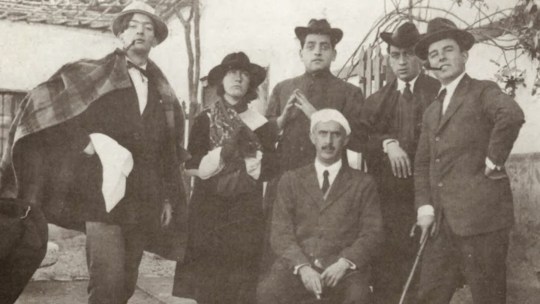
A century of the Order of thuggish and drunken knights: Lorca, Dalí and Buñuel partying in Toledo
Federico García Lorca was wrapped in a sheet stolen from the Posada de la Sangre – which disappeared in the Civil War and was the scene of Miguel de Cervantes's The Illustrious Mop –, drunk as a thief and with the desire to wander alone through the narrow streets of the old town of Toledo. Around him, some young hooligans laughed with the poet with noise and hubbub. This is how a Toledo man named Eduardo met the playwright from Granada during a Toledo night in the 1920s. At that moment, this kind man, seeing the panorama, tried to take Lorca to the relief house on Barco Street, but He flatly refused to accompany him. The poor man, of course, did not understand anything.
What this Toledoan, grandfather of the author of the space Toledo Olvidado, who is the one who told this anecdote, did not know is that Lorca was complying with one of the strict rules of the well-known Order of Toledo, a brotherhood of artists and writers related to the Generation of '27 and the Madrid Student Residence created by Luis Buñuel – calling himself Condestable – in the Venta de Aires de Toledo restaurant in March 1923.
This is how a century ago the streets of Toledo could not believe what was happening on its cobblestones. One hundred years since Buñuel, with his idea, managed to revolutionize the students of the Residence and the silent alleys of the old town of Toledo. Despite such famous components, the truth is that little or very little is known about this Order of Toledo. There is not much documentation available, beyond the stories of the protagonists themselves. Buñuel, the architect of this mischievous and intellectual action, dedicates an entire chapter to the Order in My Last Sigh, his autobiography written in his exile in Mexico.
A religious revelation and the smell of wine
«I am walking through the cloister of the cathedral, completely drunk, when, suddenly, I hear thousands of birds singing and something tells me that I must immediately enter the Carmelites, not to become a friar, but to steal the convent's treasury. The doorman opens the door for me and a friar comes. I tell him about my sudden and fervent desire to become a Carmelite. He, who has undoubtedly noticed the smell of wine, walks me to the door. The next day I made the decision to found the Order of Toledo," explains Buñuel in the aforementioned autobiography.
The rules of the Order of Toledo are strict and taken very seriously by its members. So much so that some of them even had a little problem or another in 1936, as the poet José Moreno Villa told us from Mexico, after the outbreak of the Spanish Civil War. "This order is a bit communist," thought some "men alien to letters and much more alien to irony"; although the truth is that there was only a hint of provocation in this crazy association. A normal thing among extravagant artists, somewhat dadaist, somewhat surrealist. «The starting point was to have fun, have a good time and get drunk. But it is true that, personally, I have always related what these young people did in Toledo with the historical avant-garde of the moment. I see it as the performances that the Dadaists did in Paris and Zurich, which were things that didn't make much sense, as Surrealism later adopted. In fact, it is worth noting that some members of this Order of Toledo were part of the Paris surrealist group, like Buñuel or Dalí himself,” explains Juan Carlos Pantoja, author of The Order of Toledo: imaginary avant-garde walks*.
Pantoja also details that, possibly, there were some precedents to Buñuel's Order of Toledo because "there was already a group of great intellectuals, among whom were Américo Castro, Alfonso Reyes, Antonio García Solalinde or Moreno Villa, who met in Toledo to walk at night and drink wine from 1917 onwards. He details that "they stayed in a rented house on Cárcel del Vicario street, in front of the Cathedral, and they became known as the gathering of El Ventanillo, due to the existence of a small window with views of the Valley. Buñuel says that he got to know Toledo accompanying Solalinde, so we can think that perhaps the Aragonese was at some point in these gatherings and that, from there, the idea of doing something similar arose.
Pepín Bello – who left no work, but was a friend to everyone, as gallery owner Guillermo de Osma once commented –, Rafael Alberti, Dalí, María Teresa León and Federico García Lorca and his brother, among others, were part of the Brotherhood created by way improvised by Buñuel that had something of a "poetic act", according to the poet from Cádiz. And the students of the Residence were lovers of Toledo, according to Bello in an interview in 2000:« We took the train from Madrid to Toledo, we traveled in third class and it took us two hours to arrive. We went up from the station and went to drink in the taverns of Zocodover, which was very close to the Posada de la Sangre, to get into the mood a little »
Order of Toledo: drink wine and do not shower
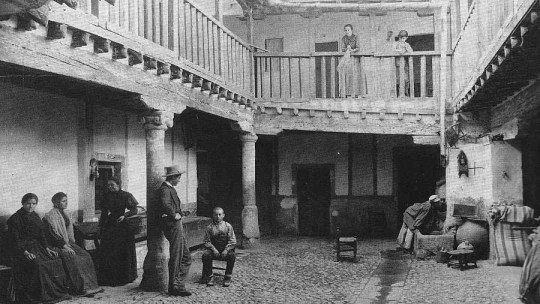
Courtyard of the Blood Inn
Among the rules of the Order of Toledo, and which Buñuel said with his Calanda crudeness, was that of not washing or showering "while the visit in this Holy City lasted." They had to go to Toledo once a year, watch over Cardinal Tavera's tomb, love Toledo above all and, of course, "wander, especially at night, through the wonderful and magical city of the Tagus," according to Alberti. "Those who preferred to go to bed early could not qualify for the rank of knight, little more than the title of squire," explains Buñuel in his autobiography. Furthermore, Pantoja details, "each of the members had to contribute ten pesetas to the common fund for accommodation and food and to go to Toledo as frequently as possible and put themselves in a position to live the most unforgettable experiences." Bello points out, recalling Toledo's adventures in an interview, that "we stayed at the Posada de la Sangre because we were students and it was difficult for us to sleep for just one peseta. Of course, it was a place of dubious cleanliness, where mainly muleteers stopped with their animals. The poet María Teresa León, in her book Memory of Melancholy, also remembered that this inn “had little rooms with just one bed. There, Rafael [Alberti], that night we didn't talk about El Greco, but we did talk about bedbugs. Toledo bedbugs! Toledoan night! I turned on the light. How well Rafael slept with his chest crossed by hundreds of little animals frantically searching for the hiding place of poetry!
Alberti precisely explains in The Lost Grove that "the brothers left the inn when the cathedral clock struck one, a time when all of Toledo seems to narrow, become even more complicated in its ghostly and silent labyrinth" and also relates in detail how He experienced firsthand his initiation into the Order of Toledo, with some fear at not knowing anything about the labyrinthine streets of Toledo.
«We went out into the street, carrying all the brothers, except me, hidden under the jacket, the sleeping sheets, taken out quietly. The poetic act was going to consist of bringing to life an entire theory of ghosts in the atrium and plaza of Santo Domingo el Real. After weaving and unweaving steps between the deep crevices of sleeping Toledo, we ended up at the convent at a moment when its defended windows lit up, filling them with veiled songs and monkish prayers. While the monotonous prayers went on, the brothers, who had left me alone at one end of the square, covered themselves with the sheets, seeming slow and distanced, white and real ghosts from another time. The suggestion and fear that I began to feel were increasing, when suddenly, the dressed visions appeared, shouting at me: 'This way, this way!', sinking into the narrow alleys, leaving me - one of the worst tests I have ever faced. the novices were subjected – abandoned, alone, lost in that frightening winding of Toledo, without knowing where I was and without the possibility of someone showing me the way to the inn, in addition to not finding a single passerby at that point in the night, in Toledo, if they don't inform someone every 30 meters, you can consider yourself lost definitively. At dawn I found the Posada de la Sangre, and I went to sleep, happy with my first adventure as an initiate into the mysteries of the Toledo order,” Alberti recalled years later.
Food and comedy at Venta de Aires
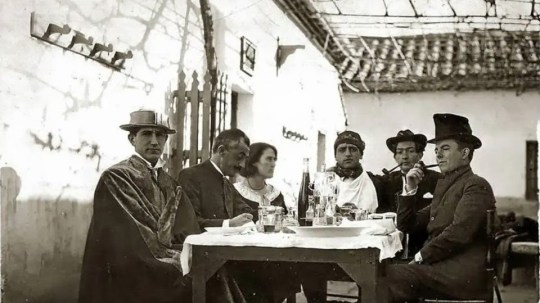
Members of the Order of Toledo, at the Venta de Aires
In Toledo, the members of this order ate, explains Buñuel, "almost always in taverns, such as Venta de Aires, on the outskirts, where we always ordered tortilla on horseback - with pork -, a partridge and white wine from Yepes." . There, in this sale, the friends performed for the first time Don Juan Tenorio, by José Zorrilla, dressed in improvised costumes, where we see that Buñuel is dressed as a parish priest, an irreverence with respect to the church and the double standards of its members that We will always see them reflected in their films. «With regard to this, this relationship between artists and religion, Max Aub told the anecdote that while walking through Toledo they found a Virgin in a niche on the street, it could be the one still located on Alfileritos Street, although it is not documented, that Dalí began to pray in a devout and tender manner, but suddenly began spitting at her angrily and insulting her. He went from one thing to another in an incomprehensible way, once again showing off his surrealist thinking," explains Pantoja.
Alberti says that also on the walls of the Venta de Aires, the brothers of the Order had left the mark of their art. «Under the arbor, the patio of our banquet, the main brothers were portrayed in pencil on the whitewash of the wall. Its author, Salvador Dalí, was also among them. Someone told the innkeepers not to whitewash them, that they were worthy works by a famous painter and that they were worth a lot of money. Despite the warning, years later they no longer existed. They had been erased by new owners of the sale," explains the poet. After eating, they returned to Zocodover, always on foot, making "an obligatory stop at the tomb of Cardinal Tavera, sculpted by Berruguete. A few minutes of contemplation in front of the recumbent statue of the cardinal, dead of alabaster, with pale and sunken cheeks, captured by the sculptor one or two hours before the putrefaction began," adds the filmmaker.
Fisticuffs with the cadets of the Military Academy
Upon returning to the old town, the Order even experienced some fights with the cadets of the Toledo Military Infantry Academy, after some of them rudely complimented María Teresa León, an anecdote that she herself tells. «At I don't know what time, just when we were visiting some taverns to balance with so much church, we came face to face with a group of uniformed boys, who turned to me and said: 'Blonde, I would eat you with suit and with everything'. Buñuel rolled up the sleeves of his shirt and when he saw him advance, the boys ran out so as not to commit themselves to Aragon, a region where the insults are harsher. They caught up with them and, after several punches, the cadets were defeated. A neighbor handed us a jug: 'Drink, drink. These cadets always making a fuss!' Meanwhile, she licked her lips with pleasure because the civilians had beaten the military, those boys are always on the hunt for Toledoan girls," León said.

Rafael Alberti and María Teresa León, poets of the Generation of '27 and members of the Order of Toledo
A confrontation with the military that Buñuel also remembers, although in a somewhat less refined way than the poet. The film director explains in his memoirs. «The cadets were really scary. One day we came across two of them and grabbing María Teresa, Alberti's wife, by the arm, they told her: 'How horny you are.' She protests, offended, I go to her defense and knock down the cadets with my fists. Pierre Unik comes to my aid and kicks one of them. There were seven of us and the two of them, we did not boast. We leave and two civil guards who had seen the fight from afar approach, instead of reprimanding us, they advise us to leave Toledo as soon as possible, to avoid the revenge of the cadets. We don't pay attention to them, and for once, nothing happens».
The Order of Toledo in Tristana
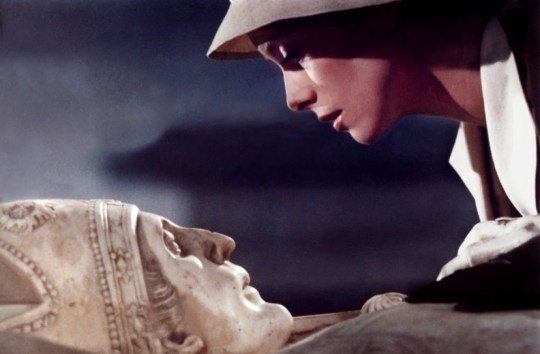
This entire Order of Toledo is reflected in Tristana, the film that Buñuel would shoot here in Toledo. Pantoja defends that "he winked at his youthful adventures, with Catherine Deneuve wandering the streets and visiting Cardinal Tavera, and bringing his face closer to him, which is one of the great images of the film." «That Order of Toledo laughed at everything, nothing was taken too seriously. They laughed at art, like the futurists did, who advocated burning museums and libraries, and they did everything, in addition, in a groundbreaking way. Their lives, without a doubt, were pure avant-garde," concludes Pantoja.
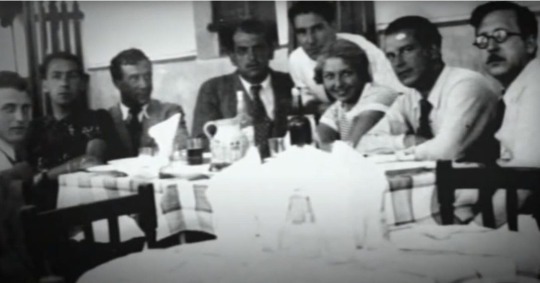
* I have scans of this book, I am planning to publish them here on Tumblr on a series of posts
#la orden de toledo#caballeros de la orden de toledo#knights of the order of toledo#federico garcía lorca#luis buñuel#salvador dalí#order of toledo#maría teresa león#rafael alberti#pepín bello#josé moreno villa
1 note
·
View note